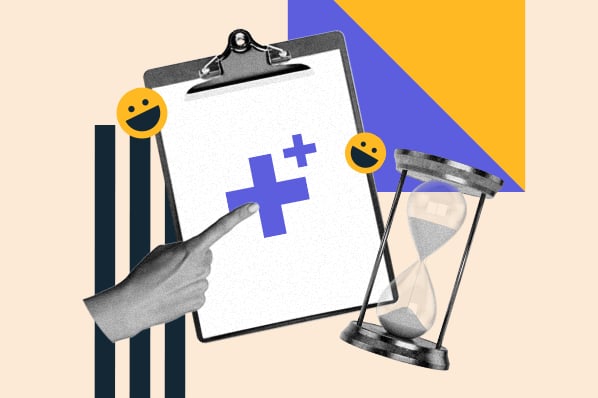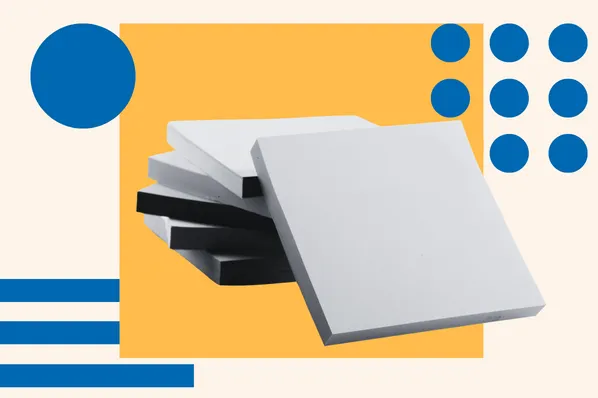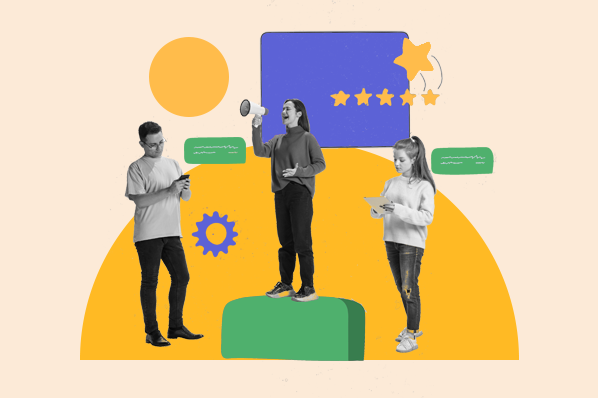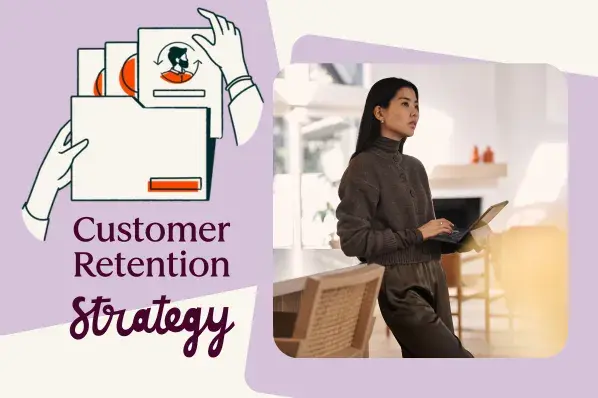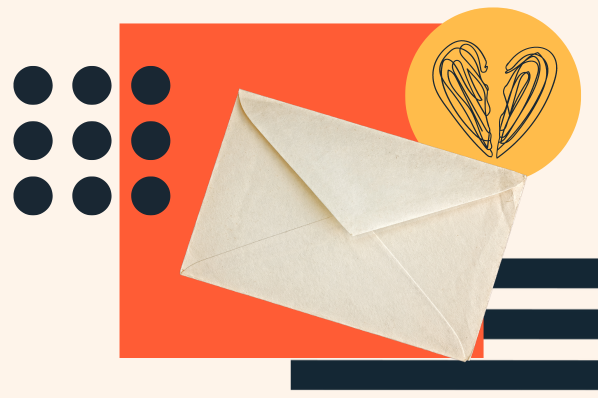That’s the power of a great customer loyalty program: it rewards customers for continuously purchasing or using a product, reinforcing the customer relationship. And now look, I’m telling you all about it!
I’ve seen the power of customer loyalty from all sides. As a former HubSpot Support rep, I helped customers stay engaged through excellent service. As a business owner, I’ve learned the importance of customer loyalty for long-term growth.
In this article, I’ll explain what a customer loyalty program is, how it works, and how to build one that keeps customers coming back.
Tables of Contents
- What is a customer loyalty program?
- What are the benefits of a customer loyalty program?
- Loyalty Program Best Practices
- How to Create a Customer Loyalty Program
- Customer Loyalty Programs for Small Businesses
- Customer Loyalty Software
What is a customer loyalty program?
A customer loyalty program is a system that rewards customers for their continued support. Something like Chipotle Rewards comes to mind, where I get points for every dollar spent that I can redeem for free food. It's simple but effective.
According to Merkle’s 2024 Loyal Barometer Report, 77% of consumers belong to up to five customer loyalty programs, and 93% say they earned or redeemed a reward in the past six months.
It’s not just points, though. Customer loyalty programs can include perks such as exclusive access to new products, invite-only events, and complimentary company-branded swag that makes customers feel like insiders. The sky is the limit when it comes to rewarding customers for their support, and the goal is to encourage continued spending by offering valuable rewards that foster deeper customer relationships.
When I worked at HubSpot Support, we didn’t run a traditional loyalty program with points and discount codes. Still, I was in the business of cultivating customer loyalty every day, and I saw how far a little appreciation could go.
When customers felt heard, supported, and appreciated for their business, I discovered that they didn’t just stick around; they upgraded their plans and became brand advocates, spreading the word about HubSpot to anyone who would listen.
Being a front-line contributor to customer loyalty was a gratifying experience. It became clear to me that the emotional connection between customers and brands is crucial to sustained growth. Points and perks are great, but a customer loyalty program is about even more than that; it rewards customers for their support, making them excited to keep coming back.
What are the benefits of a customer loyalty program?
A customer loyalty program can benefit your business in many ways. The most obvious benefit is increased repeat spending. For example, I’m a loyalty member with Delta Air Lines, so when I fly, I’m likely to choose Delta to continue accruing miles and eventually redeem them for a free trip.
However, the benefits of customer loyalty programs extend beyond just revenue. Here are some of the most significant benefits I’ve seen:
1. Better Customer Retention
“This is why I’ll never leave HubSpot.”
That’s a line I never got tired of hearing as a support rep. When I went above and beyond, whether troubleshooting DNS issues or helping with web design, customers usually let me know they appreciated the effort. When customers feel valued and supported, they tend to stay.
A customer loyalty program works the same way. It reinforces customer appreciation and gives customers a reason to stay engaged over time.
Fostering customer loyalty through a rewards program also benefits your bottom line. Loyal customers spend more money more frequently than one-time shoppers. Specifically, returning customers spend 67% more than new ones.
2. Improved Customer Relationships
Loyalty programs can help you establish, maintain, and improve customer relationships. While at HubSpot Support, I learned that the emotional connection between our customers and our brand was at the core of customer satisfaction.
My team and I didn’t just solve cases; we worked hard to show customers that we valued their time and continued business through above-and-beyond support interactions. Cultivating these customer relationships reduced churn, encouraged product upgrades, and ensured customers stuck with us for the long haul.
An excellent loyalty program is more than just points and freebies; it’s a way to demonstrate customer appreciation and bolster the connection between your customers and your brand. The result? Improved customer relationships and a boosted bottom line.
3. More Customer Referrals
When customers love the rewards and experiences your brand delivers, they’ll tell their friends and family. This word-of-mouth marketing draws in new customers at no acquisition cost and can generate even more revenue for your business.
Word-of-mouth marketing drives $6 trillion of annual consumer spending and is responsible for 13% of all sales. 77% of consumers are more likely to purchase a new product if it’s recommended by someone they trust.
When I worked at HubSpot Support, I chatted with hundreds of customers and learned about their stories and why they chose HubSpot. Initially, I was genuinely surprised by how many customers told me they had signed up because of a referral from a friend, specifically due to the quality of our support.
The more I spoke with customers, though, the more it made sense. Through our products and support, we provided honest value to customers and demonstrated that we truly appreciated their business and wanted to help them succeed. How could they not want to share that?
4. User-Generated Content and Reviews
The first thing I do before visiting a new restaurant is go straight to Yelp and read reviews. I’ll also check TikTok to see what people say about the place.
It turns out that I’m not alone. Over 75% of US consumers turn to video content when looking for information about local businesses.
That’s why user-generated content (UGC) is crucial for brands today, and a top-tier loyalty program can help unlock it. Customers who are excited about your brand and your loyalty program are more likely to write reviews, tag you online, and share their positive experiences on social media. This authentic content is built on trust and inherently holds more weight with potential customers than traditional marketing messaging.
Pro tip: You can encourage UGC and reviews by offering points, discounts, or other rewards in exchange for submitting reviews or sharing branded content.
Customers have needs, and they’ll be dedicated to brands that meet those needs and offer legitimate value. Customer loyalty isn’t guaranteed, but I learned a thing or two about fostering it during my time as a HubSpot rep. Below are my field-tested recommendations for cultivating customer loyalty through value and service.

1. Adopt a multi-channel customer service system.
Being reachable on multiple channels is no longer a nice-to-have; it’s the bare minimum. Customers today expect you to meet them wherever they are: email, phone, chat, social media, and beyond.
I was part of the social support team at HubSpot, where we pioneered proactive support through platforms like X (then known as Twitter) and Facebook. I proactively responded to customer complaints online, and customers expressed their appreciation for not having to file a ticket or call in. Just showing up where they were went a long way, and today, it’s a prerequisite for customer loyalty.
Pro tip: HubSpot’s Omni-Channel Service Software consolidates all of your service channels into one shared inbox, making it effortless for reps to meet customers across all platforms.
2. Provide exceptional customer service.
As a former support rep, I’m a little biased. But, excellent customer service is non-negotiable when it comes to nurturing customer loyalty.
Exceptional customer service doesn't just mean low wait times (though that helps). It means being responsive, transparent, honest, and genuinely invested in helping customers meet their goals.
As a support rep at HubSpot, I handled everything from basic walkthroughs to complex integration issues (those were the toughest; I’m looking at you, Salesforce). However, some of my most impactful customer interactions weren’t the ones where I saved the day.
Sometimes, we’d hit a product outage or bug, and all I could do was level with customers, validate their emotions, and keep them updated. In situations like that, being transparent and thoughtful in my communication helped build trust, which is the backbone of customer loyalty.
Pro tip: Utilize customer feedback tools and surveys, such as NPS and CSAT, to identify which aspects of your service are excelling and which require improvement. HubSpot’s Customer Feedback Software is a great starting point.
3. Focus on the customer, not the competition.
It’s easy to get distracted chasing new features and trying to keep up with the competition, especially now when every company feels obligated to roll out some kind of AI-assisted functionality. However, most customers aren’t spending time looking for greener grass. They just want their needs met.
When I worked in support, I talked to plenty of customers about their experiences with HubSpot and other tools. And you know what? They didn’t usually want to compare feature sets. What mattered more was how we made customers feel and whether we helped them hit their goals.
So instead of obsessing over what your competitors are doing, obsess over your customers and their needs, and they’ll reward you with loyalty.
Pro tip: Leverage platforms like Google Analytics and social listening tools to gain insights into what your customers value most. Use this data to innovate beyond the competition by introducing features, services, or products that are uniquely tailored to your customers’ needs.
4. Be consistent.
Human beings like consistency; it’s just a fact. It reduces cognitive load, provides a sense of order, and builds trust over time. See where I’m going with this? I appreciate that my McDonald’s fries taste the same no matter where I am in the country. Similarly, your customers crave a reliably positive experience every time they interact with your brand.
When I was onboarding as a support rep at HubSpot, consistency was baked into the process. We had brand style guides and internal documentation to help new reps deliver support that matched our high standards. I even remember having my calls shadowed so I could learn how to handle different scenarios in a dependable, HubSpot-y way. That operational consistency made our service feel dependable and trustworthy, and it played a significant role in customer loyalty.
Pro tip: Create internal playbooks, documentation, and style guides to ensure consistent messaging and tone across all customer touchpoints. However, I don't recommend using call scripts, as customers can often detect when someone is reading from a script, and it comes across as inauthentic.
5. Build credibility through meaningful customer interactions.
Customer loyalty isn’t built on transactions. It’s built on a foundation of trust, cultivated through meaningful, personalized interactions that authentically demonstrate customer appreciation.
I run a backline rental business, which means I rent amps, drums, and other musical gear for events and touring acts. Once, a customer requested a rare 10-inch snare drum that I didn’t have in stock. Instead of suggesting a substitute or saying no, I found one on Facebook Marketplace, bought it, and rented it out just for that client. I even left a handwritten note with their gear on delivery day, and they’ve been a client since.
It’s little moments like this that create lasting impressions. As a small business owner, I have the flexibility to personalize interactions at a granular level. However, even at scale, you can create meaningful experiences with the right systems and data.
Pro tip: Utilize a CRM to manage customer preferences, requests, feedback, and even birthdays. You can use this information to add personal touches to your customer outreach, follow up on past needs, and remind customers that you’re looking out for their best interests.
6. Deliver added value.
Loyalty programs with discounts and perks are great for attracting customers, but long-term loyalty requires more than just points. The best brands offer something extra. A value-added benefit that enriches the customer experience beyond just a great product or service.
When I worked in HubSpot Support, a significant part of my role extended beyond simply troubleshooting and guiding users through settings. I served as an educational resource for customers, positioning them for future success by sharing best practices, documentation, and anticipating potential concerns.
HubSpot’s knowledge base played a considerable role in that value add for customers. Our extensive documentation and community forum create an ecosystem that empowers customers to help themselves, others, and maximize the value they get out of our product.
Pro tip: Added value can be achieved in many ways. Perhaps you can add extra features, provide excellent service, or enhance the appeal of your product through packaging and presentation.
7. Share positive customer experiences.
Customers will trust other people and their experiences over marketing messaging every time. That’s why I make a point to follow up with my clients after every rental. It helps me gather valuable feedback for smoother future rentals, and I can share positive customer testimonials on my website to convince future clients.
It doesn’t need to be a novel review, either. A one-sentence quote from a satisfied customer can be enough to tip the scales in your favor. Even better, try sharing photos of satisfied customers and successful jobs on social media, with permission, of course.
Pro tip: Use customer feedback software to gather and showcase customer feedback seamlessly.
Bonus example: Turn positive customer experiences into viral content.
I came across this TikTok during my nightly scrolling sesh. In the viral video with over 5.2 million views, the owners of Prime Bites, a company that sells protein brownies, called a loyal customer to thank him for his 43rd consecutive order. To show their appreciation, they refunded his order and sent him a care package.
The whole interaction is remarkably wholesome, and hearing genuine words of satisfaction from the customer himself is so positive and authentic that I’m starting to crave a glazed cinnamon roll protein brownie myself.
8. Reward your customers.
Loyal customers are extremely valuable. They spend more, buy more frequently, and refer you to friends and family. Loyal customers deserve to be rewarded, and when you reward them well, it begets even more loyalty. It’s a bit of a chicken-or-the-egg scenario, but it starts with offering rewards that customers want.
I’ve been a part of loyalty programs that just didn’t seem worth it. At some point, a 5% discount in exchange for hundreds of dollars in spend just isn’t enough to keep me coming back. Compare that to loyalty programs like BILT or Delta SkyMiles, which offer genuine value, such as free travel and discounts on rent, and the difference is clear.
Pro tip: Use customer feedback to tailor your reward offerings. Depending on your business, customers might appreciate VIP perks, discounts, or exclusive access to new products, but you’ll never know which without asking.
Now that you know some customer loyalty best practices, how do you begin a customer loyalty program? Here’s how.
1. Choose a great name.
A great loyalty program starts with a great name. It should be memorable, unique, on-brand, and make the customer feel like they are part of something special.

Sephora’s Beauty Insider program is a classic example. It’s clear, on-brand, and exclusive-sounding enough to make customers excited about joining in and racking up points. Other notable examples include Starbucks Rewards, Amazon Prime, and Marriott Bonvoy.
Pro tip: Use language that resonates with your customers. Check out your customer reviews and social media comments to identify the words and phrases that customers are already using when discussing your products.
2. Create a deeper meaning.
I can be a little cynical about customer loyalty programs; I’ll admit it. At the end of the day, business is about making money, and I know that customer loyalty programs help meet that goal. That’s why, to convince even the most skeptical customers (like me), you need to offer genuine value and create a meaningful emotional connection.
That connection stems from making customers feel like insiders, aligning with core values that matter to them, and fostering a community that people want to be a part of.

Pro tip: Create a loyalty program that aligns with your brand’s core values and communicates a clear, compelling mission. A notable example is the Patagonia Pro Program, a membership-based initiative rooted in sustainability and a commitment to addressing the environmental crisis and protecting the natural world. By offering exclusive membership and perks to outdoor professionals and environmental advocates, Patagonia reinforces customer loyalty through the strength of its commitments.
3. Reward a variety of customer actions.
Purchasing isn’t the only valuable customer action worth rewarding. If your loyalty program only rewards spending, you may be missing out on numerous opportunities to reward customer engagement and foster loyalty.
Some examples of non-purchase, reward-worthy actions include:
- Referring a friend
- Writing a product review
- Attending an in-person event or webinar
- Completing a customer survey
- Watching a promotional video
- Opening your company app every day for a week
- Sharing user-generated content about your brand
Actions like these demonstrate customer loyalty and engagement without requiring any expenditure. Rewarding these behaviors reinforces engagement and connects emotionally with customers who share the same values.
Pro tip: Use your CRM platform to track and analyze non-purchase behaviors and assign them value.
4. Offer a variety of rewards.
Many customers want discounts, but that’s not the only reward worth offering. Some customers are in it for the free merchandise (I’m a sucker for a good tote bag), and others just want the bragging rights that come with achieving VIP status in your loyalty program.
Offering a variety of reward options creates a rich and compelling experience for customers. As I mentioned earlier, I’m a fan of the BILT Rewards card, and a big reason why is the variety of rewards that make membership a fun and compelling experience.
Like most rewards cards, I can redeem points for travel, but BILT offers many other fun options, including branded merch items, complimentary meals at neighborhood restaurants, gift cards to various merchants, and access to exclusive events like comedy shows.

Pro tip: Consider partnering with other companies to broaden your reward offerings. It adds value and excitement for customers and also exposes you to new audiences.
5. Make “points” valuable.
It should go without saying, but if you offer points in your loyalty program, those points need to be valuable. I’ve been burned too many times by loyalty programs that provide a measly 5% discount in exchange for hundreds of dollars of spending. Customers are savvy, and they’ll quickly move elsewhere if your rewards feel stingy or unattainable.

I earn 3x points on dining when I use my BILT Rewards card, and that doubles to 6x points on the 1st of the month when I pay rent (which also earns me points). Those points are 1:1 transferable to airline and hotel partners, making the points remarkably valuable.
Pro tip: Clearly and transparently communicate the value of your points. Create a conversion chart or points calculator that helps customers understand the value of their points in terms of cash rewards, travel benefits, or merchandise.
6. Structure non-monetary benefits around your customers' values.
Customers today care about values. In fact, 25% of customers are willing to boycott companies that don't align with the things they care about. Now more than ever, it’s essential to communicate the values your company stands for and let your customers offer their support through your loyalty program.
Discounts and perks are great, but allowing your customers to make a positive impact does good for the world and strengthens brand loyalty.
The shoe company TOMS is a great example. They donate ⅓ of their profits to grassroots organizations focused on mental health, ending gun violence, and increasing opportunities for children around the world.
While TOMS points aren’t directly transferable to these donations, all customer purchases support the larger mission, which galvanizes loyalty and attracts customers interested in ethical spending.

Pro tip: Offer your customers the option to redeem their points in the form of donations to causes they care about. You can also run limited-time campaigns in support of causes your customers care about and let customers vote on which charities to support.
7. Make it easy and enticing for customers to join.
Even if your loyalty program has the most valuable benefits and points of all time, you still need to market it. Take a look at your customer journey and give customers multiple opportunities to enroll at every touchpoint. That can mean in-app prompts, website banners, QR codes, CTAs at checkout, and even in-person pitches.
For example, whenever I fly JetBlue, the flight attendants pitch the airline’s loyalty credit card and try to sweeten the deal with a 30,000-mile sign-up bonus. The same thing happens whenever I shop at TJ Maxx, and the cashier tries to get me to sign up for a card with the promise of savings.
Pro tip: Make enrollment in your loyalty program frictionless and communicate the value of joining. For example, don’t just say, “Join our loyalty program,” try something like “Get $500 of free benefits with our loyalty card.”
8. Explore partnerships to provide even more compelling offers.
Strategic partnerships can enhance the value of your rewards program by providing customers with unexpected benefits while also exposing your brand to new audiences.
For example, I’m an Amazon Prime member, and one day, I unexpectedly received the benefit of a free Grubhub+ subscription. I didn’t sign up for Prime because of the Grubhub benefit. In fact, I didn’t even expect to receive it at all. However, now Grubhub is the only food delivery app I use, and my loyalty to Amazon is stronger due to the added value.
Pro tip: Look for co-branding partnerships that align with your customers’ needs and interests. If you’re a local business, consider reaching out to other companies in the area to collaborate on a loyalty program that benefits both of you while providing value to your customers.
9. Make it a game.
Gamification transforms loyalty into a fun and engaging experience that encourages participation and fosters a sense of community.
I’ve mentioned BILT Rewards a few times already, but their Rent Free game show is a perfect example of an effective gamification strategy within a loyalty program.

Every month, I jump into this Family Feud-style game on the BILT app, where I rank pre-selected answers to fun survey questions like “Name an app you can’t live without” or “What’s a word that people yell at the TV when watching sports.” The closer my answers are to the most popular picks, the better my chances of winning free rent (up to $ 2,500) or BILT points.
I haven’t won yet, but the playful competition and chance at compelling rewards have me hooked. It's a clever example of gamification in a loyalty program that feels fun and exciting. It makes me feel like I’m part of an exclusive community and not just a loyalty program.
Pro tip: You don’t have to go all out and produce a game show for your loyalty program. The use of simple game mechanics, such as leaderboards, tiers, and badges, can be enough to incentivize members to engage. Of course, it all must be backed up by meaningful rewards.
Customer Loyalty Programs for Small Businesses
As a small business owner myself, I know firsthand that little guys don’t always have access to the same resources. I might not be able to produce a loyalty game show with celebrity guests or land a Grubhub partnership, but I’ve got something better.
My company, Tri-State Backline, rents out music gear to artists and venues. As a small business owner, I have some advantages. I get to build loyalty through genuine, personal relationships and white glove service that you can only get from people who genuinely care.
You don’t need a billion-dollar marketing team to create a successful loyalty program. With some creativity and a solid understanding of customer needs, you can cultivate loyalty and generate lasting customer relationships.
Here are some small business-approved customer loyalty program ideas to get you started:
1. Punch Cards

In a digital world, sometimes it’s nice to keep things analog. Here’s the loyalty punch card from my barber. It’s straightforward, tangible, and practical. Every time I get my hair cut, a hole is punched on my card. Each visit gets me closer to a reward, which keeps me coming back.
What I like: I appreciate that my barber offers a $10 mid-way discount on my 5th haircut. Most punch cards I’ve seen in the past make you wait until the 10th transaction, which can sometimes seem a little out of reach.
2. Opt-in Email

Email is a powerful and affordable tool that small businesses can use to stay in touch with customers and build loyalty over time. The contact form above is from my rental company's website. Customers can fill out this form to receive a quote for a drum kit rental and opt in to future emails. That way, I can stay in touch with customers and inform them of any promotions or new rental gear items.
What I like: Opt-in email programs offer a direct line of communication to interested customers. They are the people I reach out to first with exclusive offers, personalized content, and just to keep my brand top of mind.
3. Free Trials

Free trials aren’t only for Saas companies and boutique productivity apps. Small businesses can offer free trials as a low-pressure way to let potential customers experience their offering before committing.
For example, I’ve been training Muay Thai for the past four years, and it all started with a free trial class that got me hooked. Now, I’m a loyal gym member, and I’ve even brought a few friends in for their own free trials. That one free session has blossomed into a long-term relationship with deep emotional ties.
What I like: Free trials reduce the barrier to entry when trying out a new product or service for the first time. It gives people a chance to understand the value you have to offer and make an informed purchase decision.
4. Partner Programs
Partner programs are an effective way for small businesses to expand their reach while building trust. Teaming up with other local businesses allows you to share a customer base and create win-win offers that generate value for you, your partner business, and the customer.
In the live music space, many venues have a preferred backline partner, typically a major national rental provider, such as SIR. These partners are often recommended on the venue’s website and in advance emails to bands and managers. The arrangement typically includes discounted rates and fosters strengthened loyalty and trust built on mutual recommendations. I’m not a rental partner to a venue (yet), but it’s a model I admire that creates lasting value for both businesses and customers.
What I like: Beyond offering perks to customers and expanding reach, partner programs can help deepen community connections among local businesses.
5. Referral Programs

Referral programs turn happy customers into revenue-generating brand ambassadors. When people have a great experience with your product or service, they often want to share it with others. So, why not offer them a discount or a fun perk? It can go a long way in encouraging people to share their positive experiences, which drives customer acquisition and revenue.
I don’t have a formal referral program (yet) at my company, Tri-State Backline, but I have gained several customers through referrals from other satisfied renters. I should really get on that …
The example above illustrates Robinhood’s referral program. Although Robinhood isn’t a small business, this is an excellent example of a valuable and exciting referral incentive. Robinhood offers a free piece of stock to both the referrer and the referee.
To make it more enticing, the free stock you receive is random, and the equity can be worth anywhere from $5 to $200. The randomness adds a fun twist. You might get a hot tech stock like Nvidia or a boring blue chip like Johnson & Johnson, and it’s all part of the fun.
What I like: Robinhood’s referral structure rewards both sides of the referral equation while also slightly gamifying the process to make it more alluring.
6. Points Systems

Point-based loyalty programs aren’t just for the big players. Businesses of all sizes can use a points system to offer customers fun perks, discounts, or even cash rewards. Living in Brooklyn, I’ve noticed that many local coffee shops and bakeries utilize Square customer loyalty software to allow customers to earn points and redeem them for a free drink, a croissant, or a discount.
For example, I’ve been accruing points at Brooklyn Roasting Company, and I love that my loyalty account is automatically recognized when I tap to pay at checkout.
What I like: Points-based loyalty programs feel like a game. It’s satisfying to receive a free coffee now and then, and it's rewarding to support local businesses and get something in return. I also like how Square makes it easy for small businesses to set up a loyalty program. No need for physical punch cards or a custom-developed loyalty app.
7. Loyalty Member Discounts

Loyalty member discounts are a simple way to show appreciation to repeat customers without using points. Take Wegmans’ Shoppers Club program, for example. When I shop at Wegmans, I don’t get points to redeem for free groceries. Instead, as a loyalty member, I receive access to exclusive discounts and coupons on select items that change weekly.

Member-exclusive savings are an attractive incentive that encourages customers to sign up, allowing Wegmans to collect data and send personalized coupons while also gaining a deeper understanding of customer buying habits.
What I like: Everyone loves getting a deal. Taking advantage of a loyalty member discount makes me feel like a savvy shopper who is part of an exclusive club, even if anyone can join.
8. VIP Memberships
A VIP membership is essentially a paid loyalty program. Customers can pay a monthly or yearly fee to access exclusive savings, premium features, benefits, and perks.

For example, Alamo Drafthouse Cinema offers a Season Pass membership that lets you watch one movie per day, along with other perks, for a monthly fee. For dedicated moviegoers, VIP membership programs like this can be exciting, cost-effective, and seriously loyalty-hardening.
Paid memberships don’t make sense for every business model. Still, for the right offering, the VIP experience can create extensive value for customers and foster loyalty and exclusivity beyond traditional loyalty program methods.
What I like: VIP memberships make customers feel exclusive and in the know, and if the benefits are truly valuable, they’ll brag about them.
9. Mission-Driven Programs
Giving back to the community is good for the world and good for business. For some customers, the best value you can offer is helping them support causes they care about. That kind of emotional connection builds loyalty in a way that points never will.

A great example is Baronfig, a stationery company that plants a tree for every journal sold. It’s a simple program that resonates with customers who are less concerned about chasing deals and more concerned with putting their money toward supporting good causes.
Mission-driven programs aren’t exclusive to big companies that can make large donations. As a small business, you can partner with local charities and nonprofits to make an impact, improve your community, and deliver value to customers.
What I like: I love how mission-driven programs foster emotional loyalty. Not all customers are motivated by savings; some people just want to feel like they are making a positive difference in the world. If your business can help people achieve that, you’ll earn their long-term trust and possibly even some extra spending.
10. Community Programs

Small businesses have a significant advantage over large corporations: community. Nobody wants to attend a guided meditation sponsored by McDonald’s, but people will turn up for community events organized by local businesses that make them feel connected to the people around them.
For example, my local coffee shop, Beepublic, hosts monthly bingo and trivia nights. The events are fun and welcoming, and the owner makes a point to chat with everyone who attends. When I went to bingo night for the first time, I felt like I was officially part of the neighborhood. Now, there’s only one place I’ll stop at for a cold brew in my neck of the woods, and it’s not Starbucks.
What I like: Community programs help people feel connected to one another and, in turn, to your business.
Customer Loyalty Software
Building a customer loyalty program from scratch sounds intimidating. Luckily, you don’t have to.
1. Xoxoday Plum

Xoxoday Plum is a powerful customer loyalty rewards platform that helps businesses engage and retain their customers through personalized reward programs. With Xoxoday Plum, companies can easily create and manage reward campaigns that are tailored to their specific customer base, offering rewards that are both meaningful and relevant.
What I love: Customers report that Xoxoday Plum offers support for multiple countries, making it an excellent fit for a global company. Beyond that, vouchers are easy to redeem, resulting in a seamless customer experience.
2. Yotpo

Yotpo is an incentive marketing platform that helps you build a custom loyalty program. There are multiple options for you to choose from, including a tier-based program, a point system, or referrals. The goal? To engage your existing customers and reach new ones.
What I love: Yotpo offers tools for UGC management, making it easy to promote customers who sing your praises.
3. LoyaltyLion

LoyaltyLion helps you create a loyalty program to make your customers feel valued rather than just being another number. You can customize a program based on points, rewards, and tiers that customers can access anywhere along their journey. You can also target customers at risk of churn with offers to re-engage.
What I love: LoyaltyLion makes building a customized program easy, with a robust analytics dashboard that shows user engagement.
4. Blackbird

Blackbird is an innovative loyalty solution built specifically for local restaurants. The Blackbird app feels chic and exclusive, and I appreciate that it allows me to earn points, gain VIP status, secure guaranteed reservations, access exclusive Blackbird events, and receive complimentary drinks at neighborhood restaurants.
What I love: Blackbird utilizes a crypto-based reward points system called $FLY, which accrues with every dollar spent when you pay your check through the Blackbird app. $FLY is redeemable like cash at any Blackbird partner restaurant.
5. Square Loyalty

Square offers an easy-to-use loyalty program solution that integrates with their ubiquitous POS system. It’s an excellent solution for small and local businesses seeking a customizable, trustworthy loyalty program solution that rewards customers seamlessly.
What I like: I like that Square Loyalty remembers me by my payment method. Even if I forget to input my phone number at checkout, I can still earn rewards as long as I use the same credit card, making for an effortless loyalty experience.
Start your customer loyalty program today.
A loyalty program is a creative way of saying “thank you” to your most valuable, reliable customers. It won’t fix a lackluster product or less-than-stellar customer experience. However, if you have the foundation and value to back it up, a customer loyalty program will strengthen customer relationships, drive acquisition, and encourage customers to return for more.
Whether you’re a multinational conglomerate or a local business like mine, rewarding customer loyalty is an obvious choice for continued growth. Your business is nothing without customers, so treat them like royalty, and they’ll return the favor.
Editor's note: This post was originally published in July 2019 and has been updated for comprehensiveness.
.png?width=112&height=112&name=Image%20Hackathon%20%E2%80%93%20Square%20(30).png)
-1.webp)
.png)
-2.png)
![7 Customer Acquisition Challenges You Might Face This Year [New Data]](https://53.fs1.hubspotusercontent-na1.net/hubfs/53/customer%20acquisition%20%20(1).webp)


-4.png)
